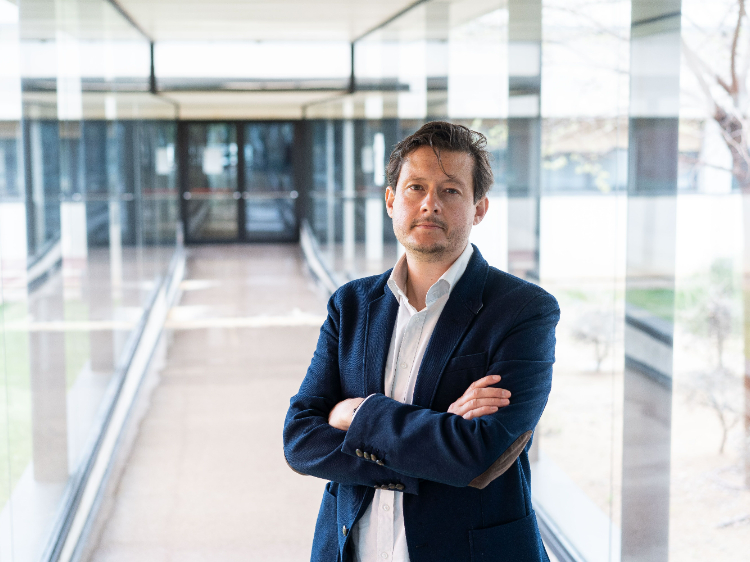
The PORECAPTURE project is aimed at developing mixed membranes based on MOF materials, capable of capturing CO2 very efficiently and at low cost. Carlos Martí-Gastaldo, researcher at the Institute of Molecular Science (ICMol) of the University of Valencia and leader of the project, has received funding from the European Research Council to put into practice the innovative potential of this new technology useful for the fight against the greenhouse effect. Its commercialisation is generating expectations in the environmental industry.
The continuous increase in greenhouse gas emissions into the atmosphere is a pressing problem for our society. The urgent need for strategies to reduce the concentrations of this type of gas has triggered international action by governments. Carbon capture and storage (CCS) technologies have been considered a key solution to reverse the upward trend in the presence of CO2 in the atmosphere, since they can mitigate, or at least delay, the alarming consequences of the greenhouse effect.
Still today, the most common solution to reduce post-combustion carbon dioxide is chemisorption, a mixture separation process that has many limitations due to its low selectivity to identify and quantify CO2, its corrosive effect and high energy consumption that this technique requires for its operation and maintenance. Although organic polymer membrane systems have been trying to find a place in the industry for years, it is the development of blended membranes that is really attracting interest from the environmental industry.
The Funimat group of the Institute of Molecular Science (ICMol) of the University of Valencia, specialised in the design of functional inorganic materials, has developed a family of MOF-type materials (Metal-organic frameworks) with optimal properties for CO2 capture. With the PORECAPTURE project, the team plans to incorporate these MOFs – porous, crystalline, and very stable metal-organic structures – into mixed matrix membranes, giving them great capacity to select CO2 in a wide range of conditions and greatly exceeding the problems and limitations of existing technologies. “We have a very attractive technology for the removal of CO2 from mixed and humid gases, since it is relatively simple, can be easily replaced and requires minimal investment and costs”, explains Carlos Martí-Gastaldo, head of the ICMol Funimat group and leader of the project.
From laboratory to industry
PORECAPTURE is the result of the Chem-fs-MOF (Chemical Engineering of Functional Stable Metal-Organic Frameworks: Porous crystals and Thin-film Devices) project, launched in 2017 by Martí-Gastaldo. That project was funded with the first of the three grants that the European Research Council (ERC) has already given to this chemist from the University of Valencia, a Starting Grant given at the end of 2016 for the development of new advanced porous materials and their implementation in applications of environmental interest.
A few months ago, Martí-Gastaldo received a new aid in the form of a Consolidator Grant for another project and has now received the Proof of Concept from the same European organisation, a complementary allocation that must be dedicated to the phase of verification of the feasibility of PORECAPTURE for its subsequent commercialisation. “We intend to implement the technology in collaboration with companies interested in this type of problem; generate prototypes so that our solution can be validated in the plant”, comments the scientist.
PORECAPTURE is established as a technology closely linked to the company PMA (Porous Materials in Action), a spin-off of the University of Valencia to which the academic institution has licensed the exploitation patent for these materials in order to accelerate their industrial development.

